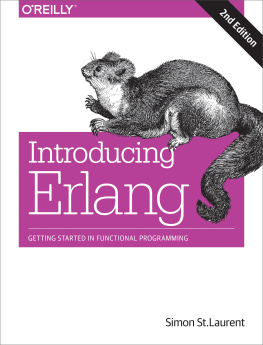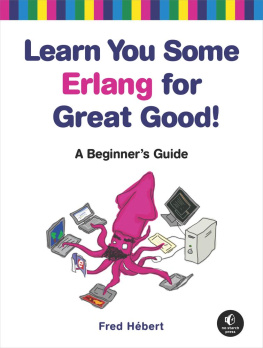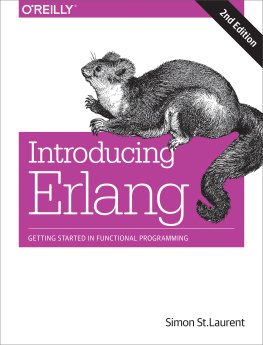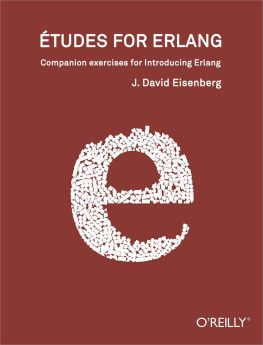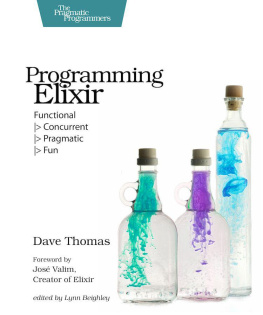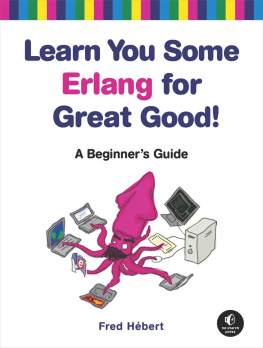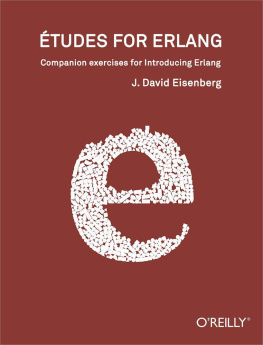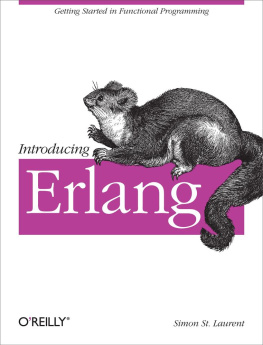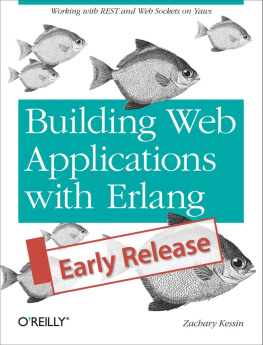Joe Armstrong - Programming Erlang: Software for a Concurrent World
Here you can read online Joe Armstrong - Programming Erlang: Software for a Concurrent World full text of the book (entire story) in english for free. Download pdf and epub, get meaning, cover and reviews about this ebook. year: 2013, publisher: Pragmatic Bookshelf, genre: Computer. Description of the work, (preface) as well as reviews are available. Best literature library LitArk.com created for fans of good reading and offers a wide selection of genres:
Romance novel
Science fiction
Adventure
Detective
Science
History
Home and family
Prose
Art
Politics
Computer
Non-fiction
Religion
Business
Children
Humor
Choose a favorite category and find really read worthwhile books. Enjoy immersion in the world of imagination, feel the emotions of the characters or learn something new for yourself, make an fascinating discovery.
- Book:Programming Erlang: Software for a Concurrent World
- Author:
- Publisher:Pragmatic Bookshelf
- Genre:
- Year:2013
- Rating:5 / 5
- Favourites:Add to favourites
- Your mark:
Programming Erlang: Software for a Concurrent World: summary, description and annotation
We offer to read an annotation, description, summary or preface (depends on what the author of the book "Programming Erlang: Software for a Concurrent World" wrote himself). If you haven't found the necessary information about the book — write in the comments, we will try to find it.
A multi-user game, web site, cloud application, or networked database can have thousands of users all interacting at the same time. You need a powerful, industrial-strength tool to handle the really hard problems inherent in parallel, concurrent environments. You need Erlang. In this second edition of the bestselling Programming Erlang, youll learn how to write parallel programs that scale effortlessly on multicore systems.
Using Erlang, youll be surprised at how easy it becomes to deal with parallel problems, and how much faster and more efficiently your programs run. Thats because Erlang uses sets of parallel processes-not a single sequential process, as found in most programming languages.
Joe Armstrong, creator of Erlang, introduces this powerful language in small steps, giving you a complete overview of Erlang and how to use it in common scenarios. Youll start with sequential programming, move to parallel programming and handling errors in parallel programs, and learn to work confidently with distributed programming and the standard Erlang/Open Telecom Platform (OTP) frameworks.
You need no previous knowledge of functional or parallel programming. The chapters are packed with hands-on, real-world tutorial examples and insider tips and advice, and finish with exercises for both beginning and advanced users.
The second edition has been extensively rewritten. New to this edition are seven chapters covering the latest Erlang features: maps, the type system and the Dialyzer, WebSockets, programming idioms, and a new stand-alone execution environment. Youll write programs that dynamically detect and correct errors, and that can be upgraded without stopping the system. Theres also coverage of rebar (the de facto Erlang build system), and information on how to share and use Erlang projects on github, illustrated with examples from cowboy and bitcask.
Erlang will change your view of the world, and of how you program.
What You Need
The Erlang/OTP system. Download it from erlang.org.
Joe Armstrong: author's other books
Who wrote Programming Erlang: Software for a Concurrent World? Find out the surname, the name of the author of the book and a list of all author's works by series.



